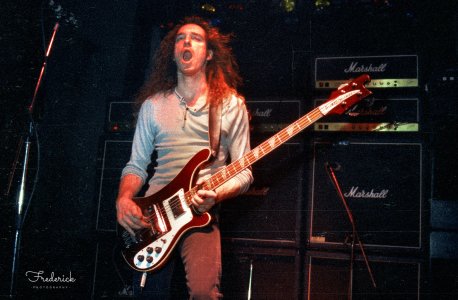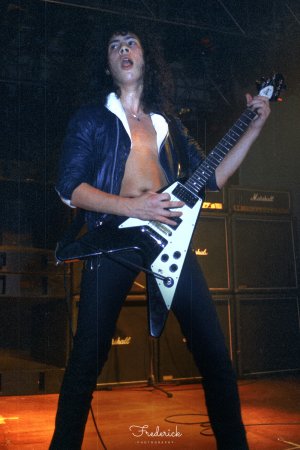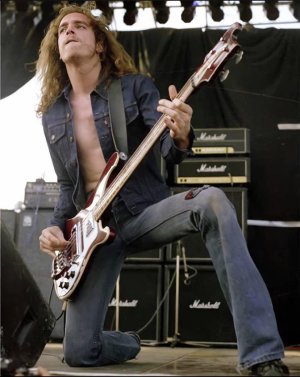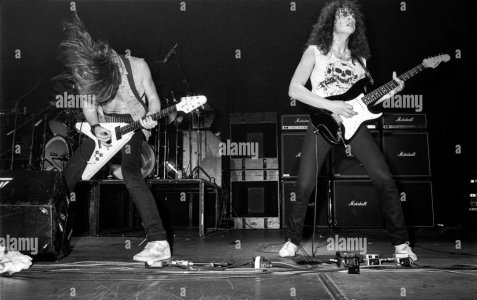Bob Zaod
Rock Star
- Messages
- 2,872
I tried it and gave it a fair chance. For me the Helix LT is a superior unit overall. Even missing a proper 2203 and all.
I've been inches away from buying an FM9 several times, out of curiosity, but every time I think about the utility of it vs. my Helix Floor, I realize it'll just be another piece of gear that only gets pulled out once in a while. That's because I use the mic input on my Helix all the time, and it works great for setting up a very usable vocal chain while I also run acoustic or electric guitar through it. My Helix is quite literally my do-it-all box for all of my audio needs, at least outside of my computer and DAW.I tried it and gave it a fair chance. For me the Helix LT is a superior unit overall. Even missing a proper 2203 and all.
My experience precisely!I tried it and gave it a fair chance. For me the Helix LT is a superior unit overall. Even missing a proper 2203 and all.
In addition to @SwirlyMaple 's remark about vocal chain the Helix also has amazing bass amps, cabs and FX. Don't know any modeler that has this much bass stuff.My experience precisely!
Don't get me wrong, I do believe that the AxeFX3 is the gold standard in modelers, but based on my FM3/FM9 experiences, I know that the Helix sounds just as good and I vastly prefer the workflow.
It is also a lot more fun to play around with, *in my opinion*.
For me, having owned both and sticking with Fractal, it's two experiences for workflow.My experience precisely!
Don't get me wrong, I do believe that the AxeFX3 is the gold standard in modelers, but based on my FM3/FM9 experiences, I know that the Helix sounds just as good and I vastly prefer the workflow.
It is also a lot more fun to play around with, *in my opinion*.
Rectos are the models I avoid the most, I just don't like them even in the real world, despite liking the sounds others get from them.
Rectos are the models I avoid the most, I just don't like them even in the real world, despite liking the sounds others get from them.
this is exactly how I feel about ORANGE amps or models




I like some Orange amps but I can understand that criticism. They just have this very thick sound to them which is sometimes too much and aside from external EQ pedals there's not all that much you can do to get rid of some of the low mids or whatever it is that makes that character.Very well said and I only quote the very end because this is exactly how I feel about ORANGE amps or models. I have heard others make them sound great but to my ears they are mud laden junk. It's too bad too because I love the way they look. Something about the gain/distortion that just grates on my ears.
It doesn't matter if one personally likes the JCM800 or not, this circuit is part of history and had a huge part in defining the electric guitar sound across many genres of music.
I believe every modeler has to model this amp as accurately as possible in every generation, no excuses.
I don't know what Line 6 were thinking all these years, but they do not and did not have a good model of this amp probably ever, this has to change.
--
Here's a few photos of Metallica in February 84 before recording RTL and before the Boogie era, all 2203 JCM800's and JMP's.
Last photo shows Kirk's live setup from that era; Crybaby -> Boss OD1 -> Boss GE7 -> JCM800's.
First photo with Cliff is Hetfield's side of the stage, all JCM800's, probably boosted with something similar to Kirk's setup.
View attachment 8468
View attachment 8469View attachment 8470
View attachment 8471

ENGL is another brand that is "I guess that sounds fine, but I have no interest in buying it" and I've tried quite a few of their amps since they were well available over here. Hughes&Kettner to a lesser degree as well but you don't see those modeled anywhere - always too fizzy to me but I bet they would work well in a band mix.
I like some Orange amps but I can understand that criticism. They just have this very thick sound to them which is sometimes too much and aside from external EQ pedals there's not all that much you can do to get rid of some of the low mids or whatever it is that makes that character.
Rockerverb tip: boost it and lower the gain. *bright cap alert*Very well said and I only quote the very end because this is exactly how I feel about ORANGE amps or models. I have heard others make them sound great but to my ears they are mud laden junk. It's too bad too because I love the way they look. Something about the gain/distortion that just grates on my ears.
Which is exactly how you get that super crunchy AC/DC tone, you lower the Gain to about 4 where the 1nF bright cap is very present then slam it with a healthy boost.Rockerverb tip: boost it and lower the gain. *bright cap alert*

After two months of exhausting apprenticeship as your side kick: can we finally talk money?Which is exactly how you get that super crunchy AC/DC tone, you lower the Gain to about 4 where the 1nF bright cap is very present then slam it with a healthy boost.
Or 80s metal tone for that matter, Gain at 6-7 which still has plenty of bright cap effect and slam with classic OD pedals.[...]

The goddam Marshalls in the Helix don't have bright caps, a huge variety of classic rock and metal tones are completely missing from the Helix.
And NO, the goddam Friedman doesn't sound like a Marshall, and it doesn't have the goddam bright cap either.
“Sooo you miiight be welll awarrre of, the fiiinnneee folks aaat Liiinnneee siiix reeecently releeeaaased a fiiirmware update…”Why can I hear this video when I’ve not watched it at all.
Which is exactly how you get that super crunchy AC/DC tone, you lower the Gain to about 4 where the 1nF bright cap is very present then slam it with a healthy boost.
